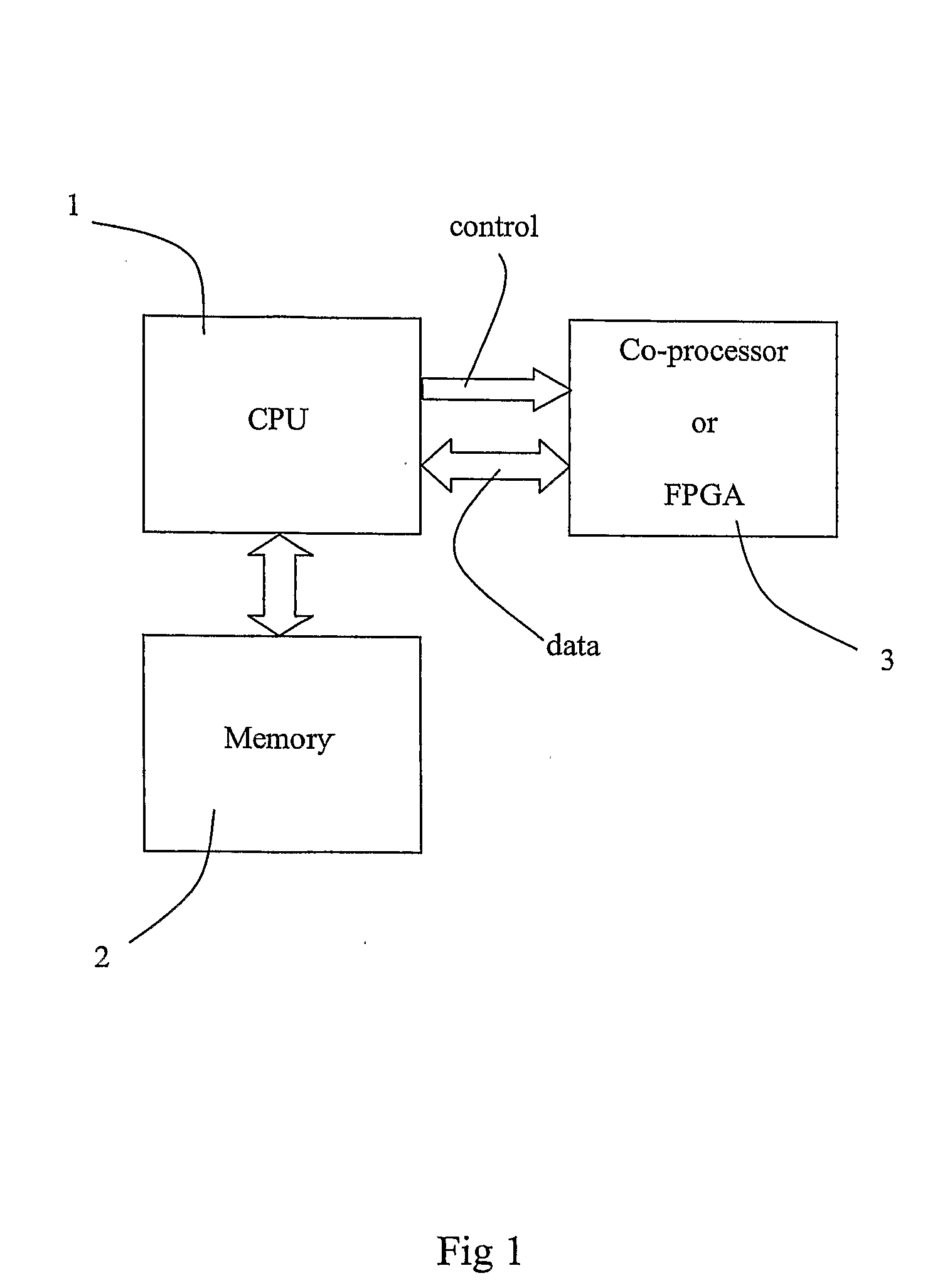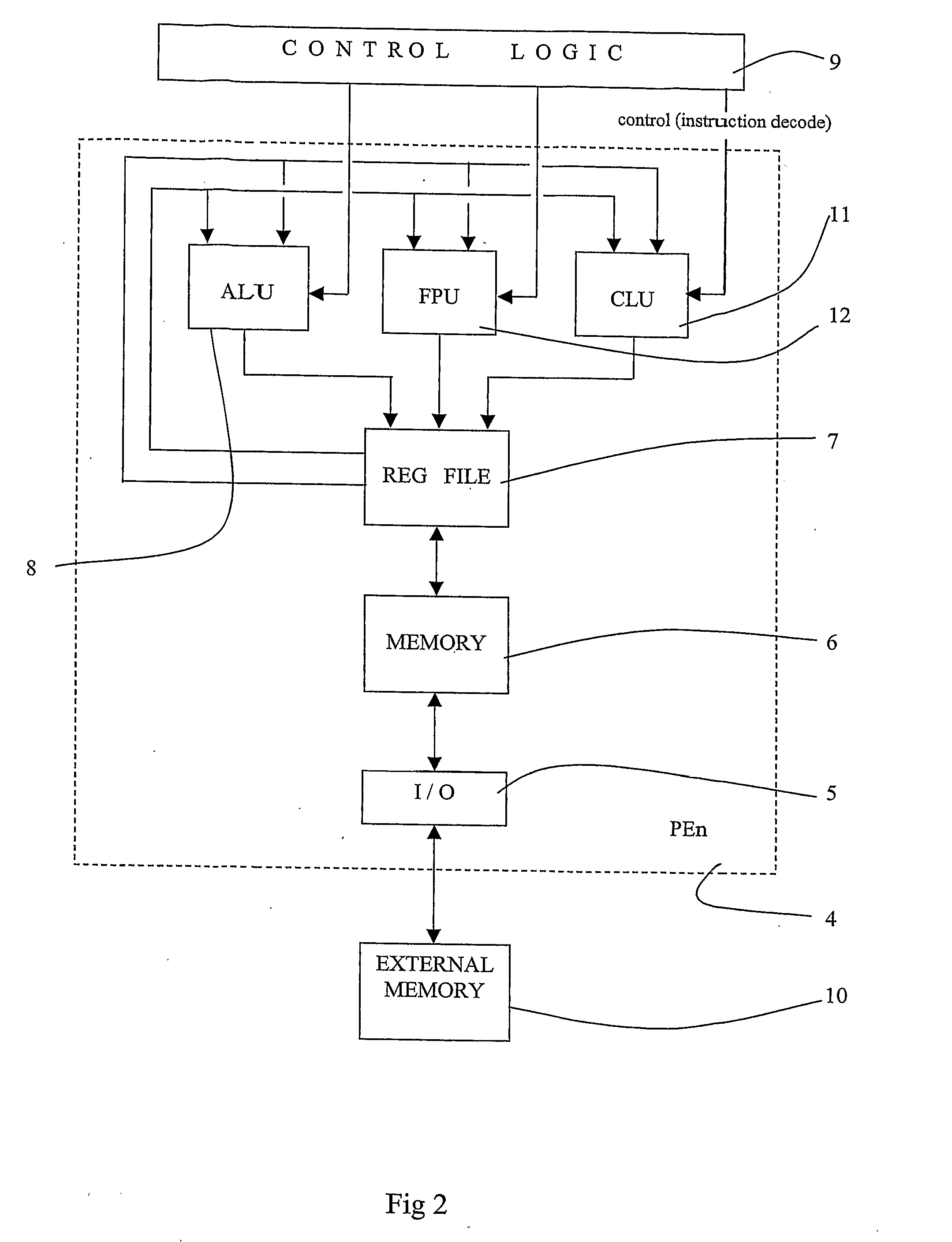Reconfigurable Logic in Processors
a reconfigurable logic and processor technology, applied in the field of processors, can solve the problems of inability to retarget another application, inability to reconfigure the architecture, and increase the size, power consumption and configuration complexity of the configurable logic block, so as to achieve the effect of convenient access and us
- Summary
- Abstract
- Description
- Claims
- Application Information
AI Technical Summary
Benefits of technology
Problems solved by technology
Method used
Image
Examples
Embodiment Construction
[0024]FIG. 1 depicts a generic processor 1 connected to memory 2 and to either a co-processor or FPGA 3 via a control path and a two-way data path. The co-processor or FPGA may be configurable so as to produce a configurable processor at the level discussed in the introduction above.
[0025]Application specific acceleration of many algorithms is well known to fit FPGA architectures, indeed many algorithms were designed to fit into small pieces of hardware in the first place. These algorithms have been translated into software and form small computational inner-loops, usually highly optimised. These intensive inner loops can be shown to work orders of magnitude faster when mapped back onto (configurable) hardware.
[0026]FIG. 2 illustrates schematically a processing element 4. It is one of many in an array and is hence treated as the nth PE, labelled PEn, in the drawing. The array can be a SIMD array.
[0027]The PE 4 includes the usual association of I / O unit 5, local memory 6, register fi...
PUM
 Login to View More
Login to View More Abstract
Description
Claims
Application Information
 Login to View More
Login to View More - Generate Ideas
- Intellectual Property
- Life Sciences
- Materials
- Tech Scout
- Unparalleled Data Quality
- Higher Quality Content
- 60% Fewer Hallucinations
Browse by: Latest US Patents, China's latest patents, Technical Efficacy Thesaurus, Application Domain, Technology Topic, Popular Technical Reports.
© 2025 PatSnap. All rights reserved.Legal|Privacy policy|Modern Slavery Act Transparency Statement|Sitemap|About US| Contact US: help@patsnap.com



